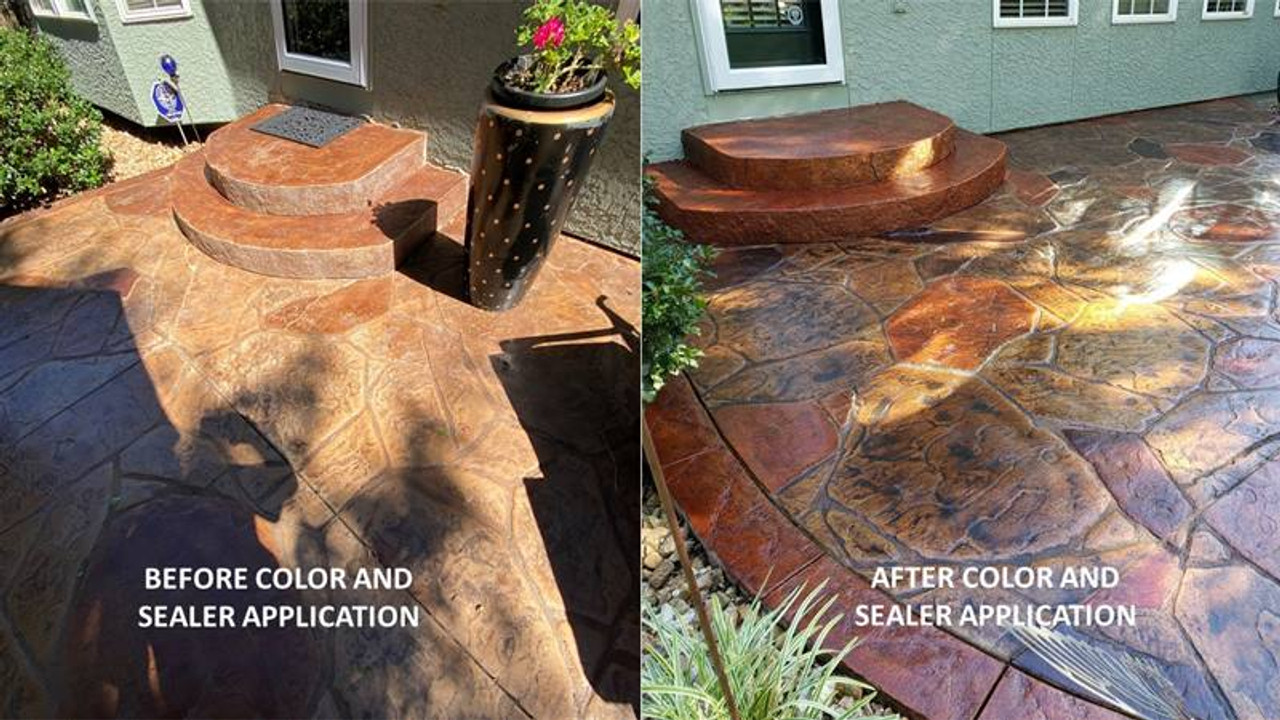Homeowners often want the beauty of colored concrete but do not always know the options available or which of those options would work best for their needs. I would like to take a moment of your time to go through the options and some of the pros and cons of each. Here is our photo album of Color stain projects created by our customers ad DIY or project which we did for customers. SealGreen Photo Album
There are two basic ways to add color to concrete - 1) integral (added to the mix when making the concrete and 2) topical (put on the surface of the concrete after it is laid.
A key factor to remember in adding color (either integral or topical) to concrete is to remember that your base color is gray. Any color you add to or apply to the concrete will be working with a gray base and not a white base.
Integral Color - The color is mixed into the concrete at the time it is being prepared to be installed. This option has limited color choices, is often expensive, sometimes variable in color if the installation requires more than one truck of concrete or water is added to various loads. The most common complaint we hear is that the color does not come out deep enough. The customer is usually expecting a rich, vivid color and often gets a mild version of the color. Browns often become pinkish. The pictures with this blog show an installation that was done with integral color that the customer did not like as it was not rich enough. They wanted a bold gray color and instead it came out light gray.
Acid Stains - Pros: There are a wide variety of products to choose from and they are readily available. Pricing is competitive. Coloring your concrete can increase the aesthetic value of your property. It does not impact the durability of your concrete and if used on interior concrete, it can always be covered by an alternative flooring option.
Cons: Every concrete floor takes the acid stain differently. The age of the concrete, the mix design for the slab, cleaning materials used on the slab and spills can adversely affect the color you get from the acid stain because it is a chemical reaction with the slab. This makes the results unpredictable, even on brand-new concrete floors. Some new concrete with change a few shades, some many shades, and can even come out in different shades. There are limited color choices. There is a lot of extra labor involved and if the process is shortcut, it can ruin the entire installation. You must rinse and neutralize the slab and thoroughly clean the surface before any sealer is applied or there could be an adverse reaction. Acid staining will not cover the imperfections in the floor. If not rinsed off carefully, acid stains can kill landscaping.
Water-Based Stains - This is the solution that we recommend for several reasons. Water-based stains have a much greater range of colors because these stains use pigments. They also do have the problem of unpredictable color coverage. The stains do marble and are thin, so they do not cover imperfections but use the imperfections in the marbling to create unique beauty on the slab. Water-based stains work like watercolors so they can be blended to create one-of-a-kind colors and unique, beautiful designs. SealGreen Water-based stains can be used over integral color and acid-stained surfaces to even out color (such as what was done with the project in the pictures). Water-based stains are easy to use and safe for use inside (i.e., basements, garages), near landscaping and vegetation. Please go to SealGreen photo album to see some of the beautiful projects created by our customers (and a few that we did). Here is the link to the SealGreen Color Chart.

